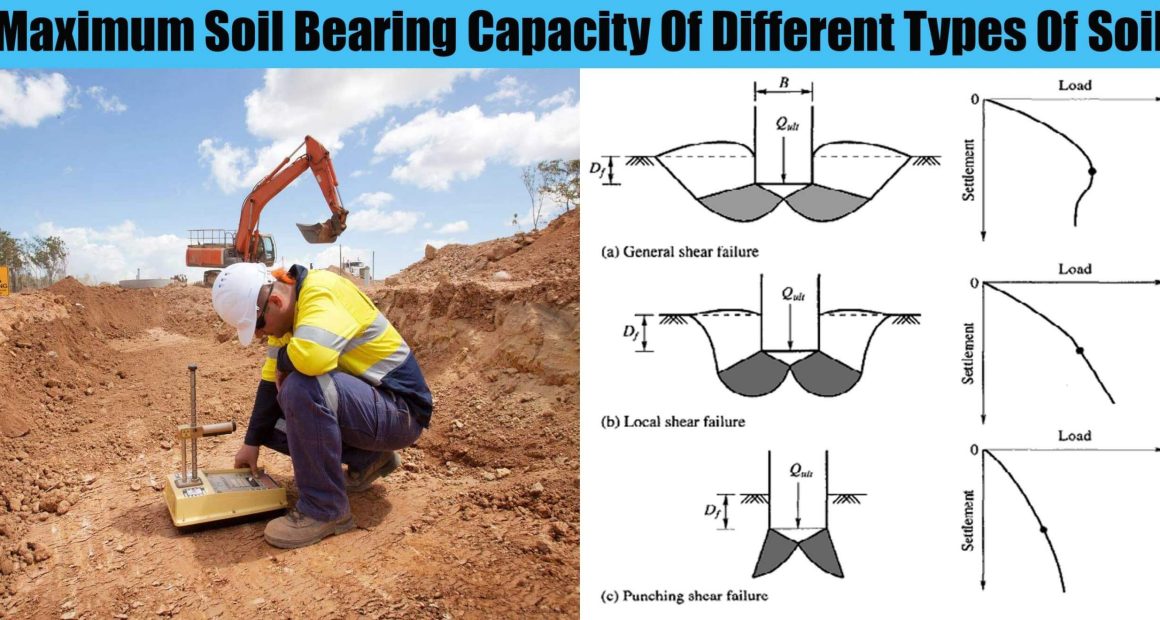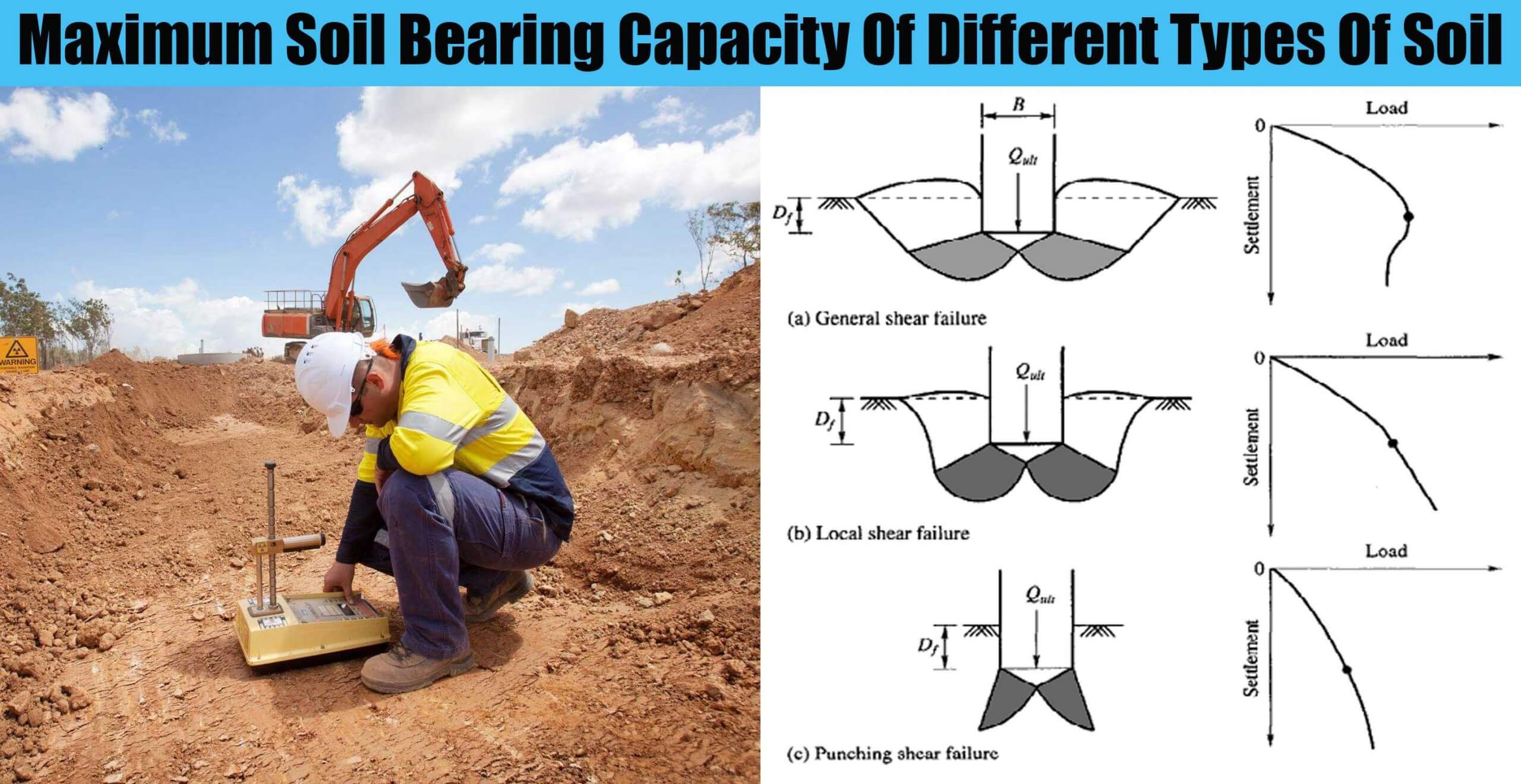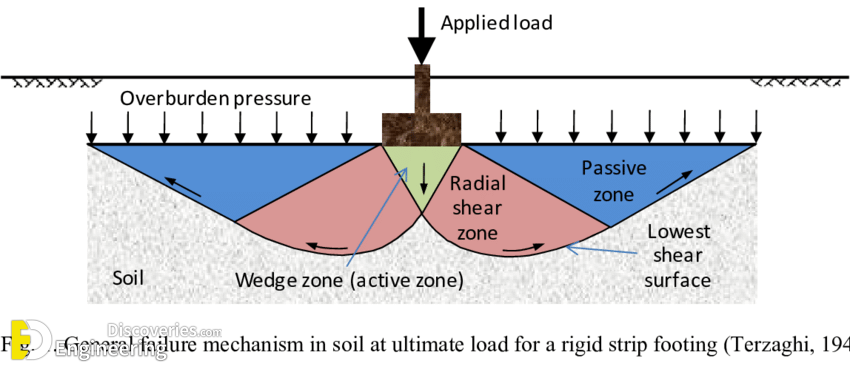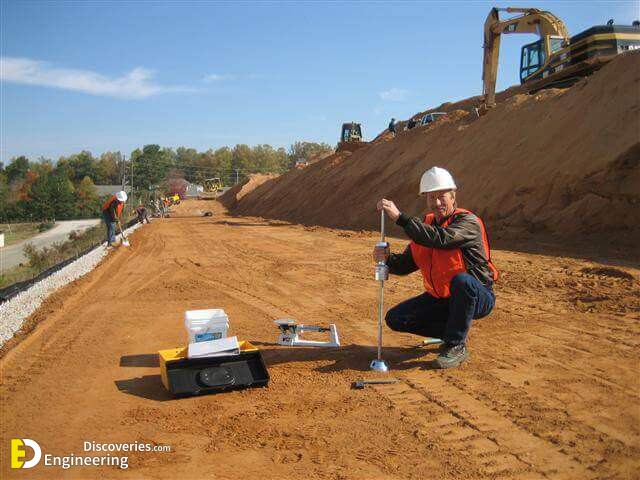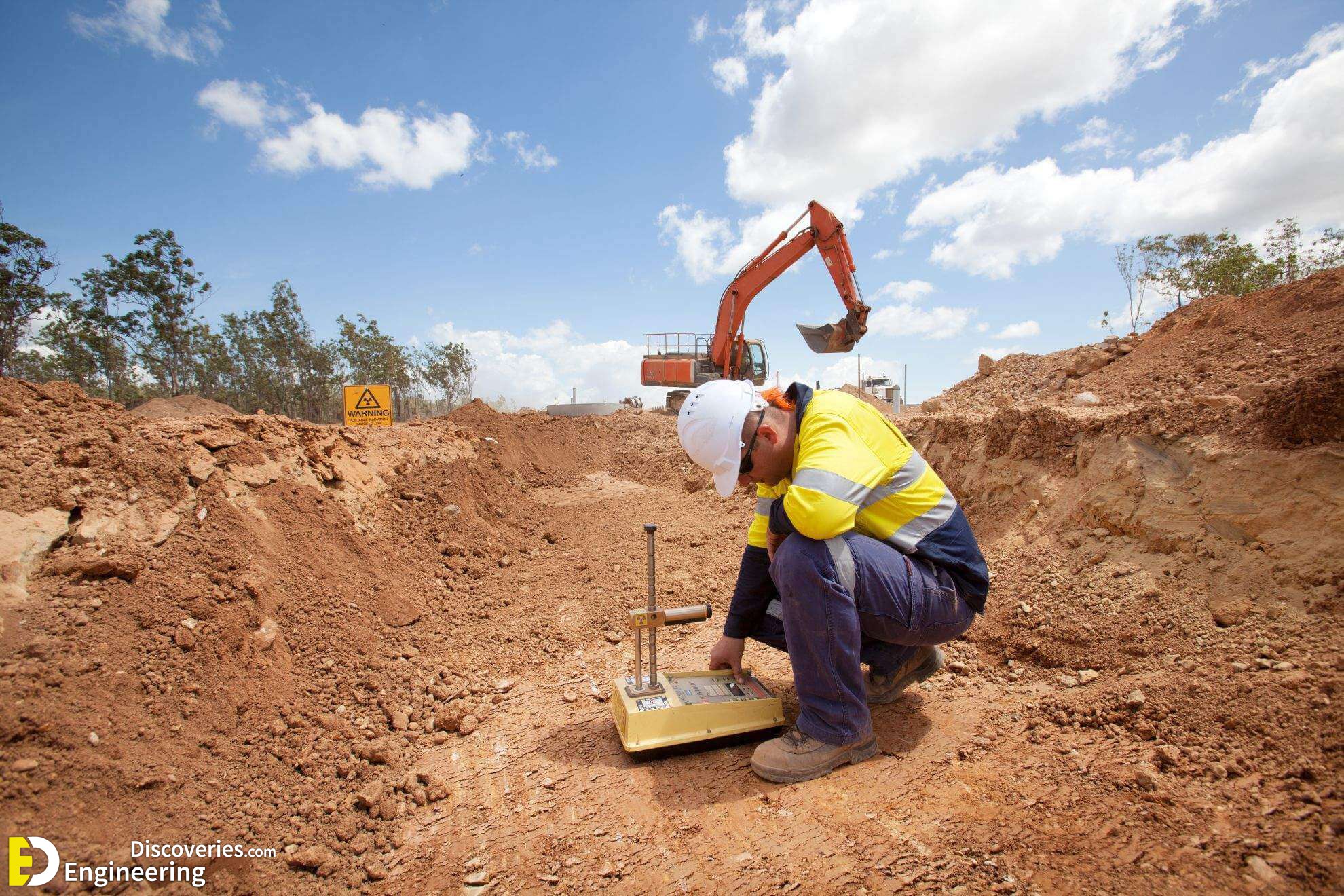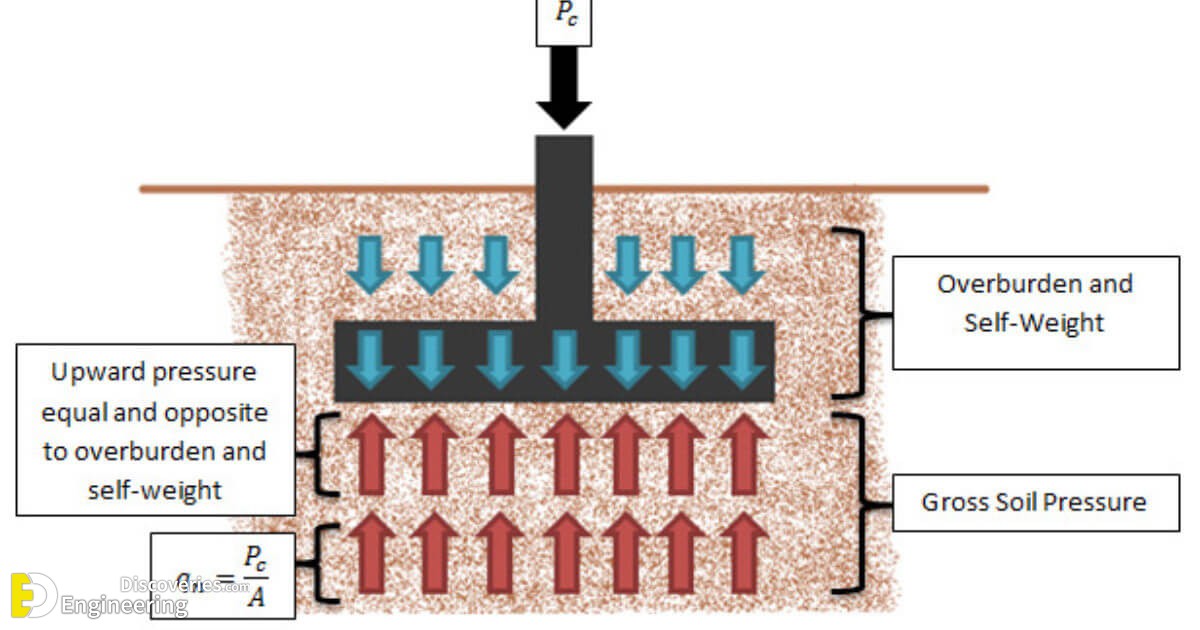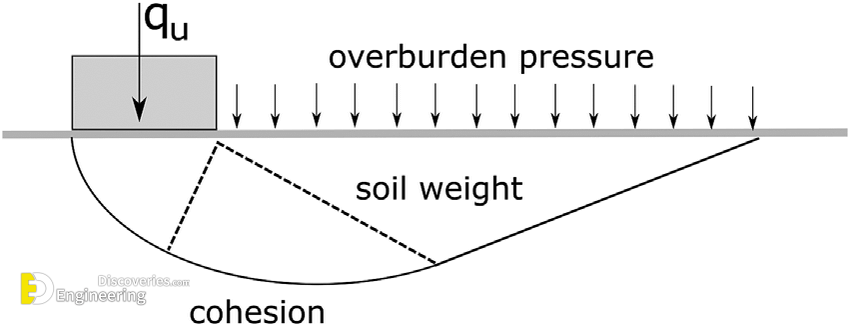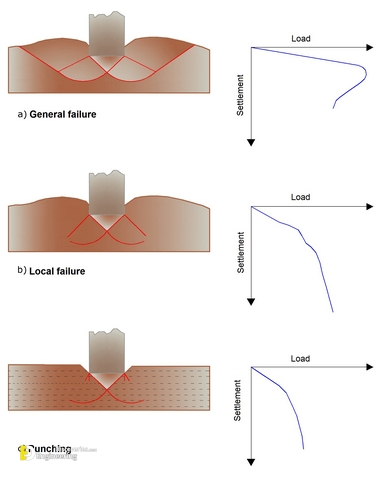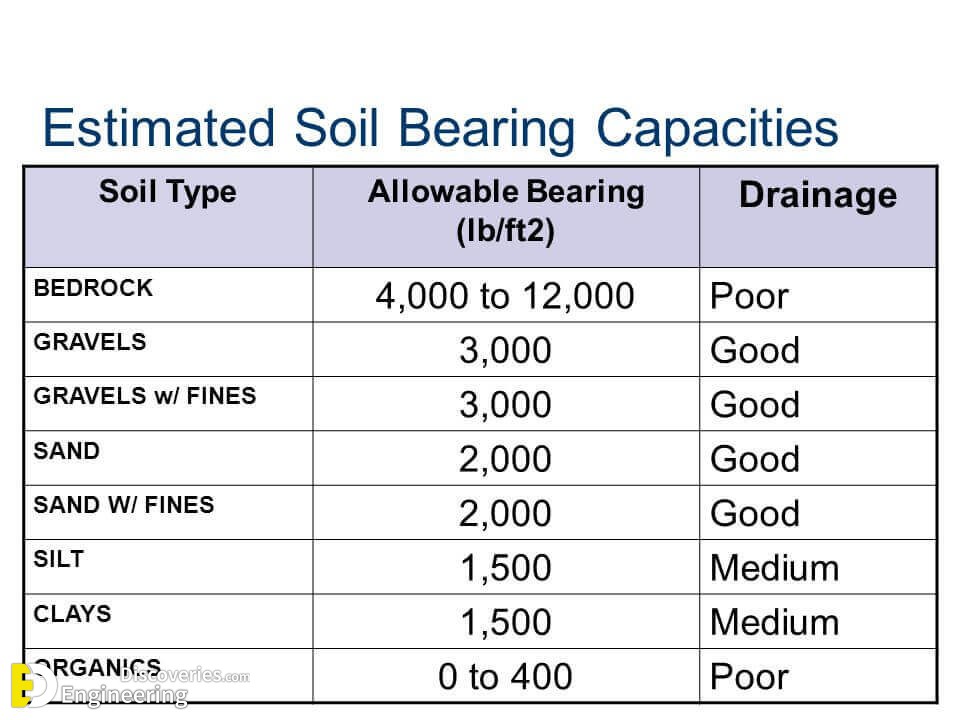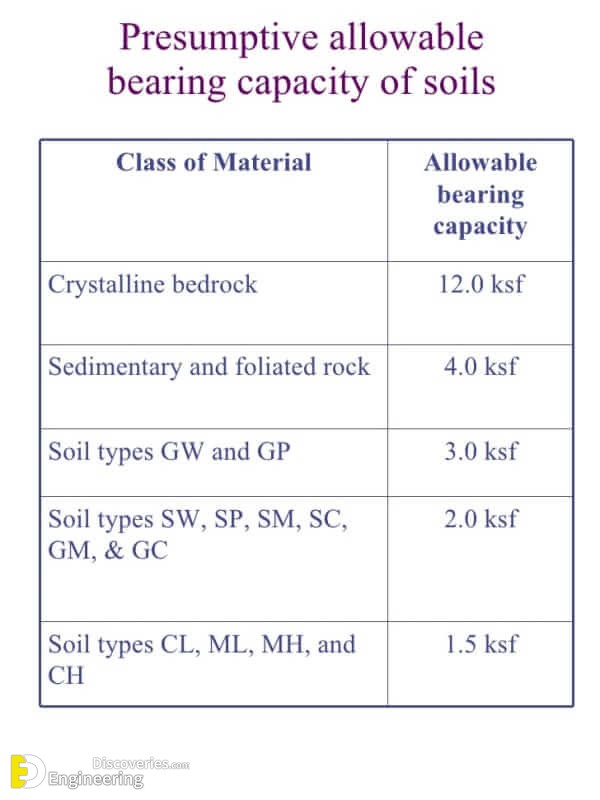In geotechnical engineering, bearing capacity is the capacity of soil to support the loads applied to the ground. The bearing capacity of the soil is the maximum average contact pressure between the foundation and the soil which should not produce shear failure in the soil.
Ultimate bearing capacity: is the theoretical maximum pressure which can be supported without failure
Allowable bearing capacity: is the ultimate bearing capacity divided by a factor of safety. Sometimes, on soft soil sites, large settlements may occur under loaded foundations without actual shear failure occurring; in such cases, the allowable bearing capacity is based on the maximum allowable settlement.
There are three modes of failure that limit bearing capacity: general shear failure, local shear failure, and punching shear failure. It depends upon the shear strength of soil as well as shape, size, depth and type of foundation.
Below are the maximum soil bearing capacity of different types of soil:
Type of soil safe bearing capacity kg/m2 Maximum
2- Soft clay -10,000
3- Fine, loose and dry sand -10,000
4- Black cotton soil -15,000
5- Moist clay and sand-clay Mixture-15,000
6- Loose gravel- 25,000
7- Medium clay-25,0008- Medium, compact and dry sand – 25,000
9- Compact clay– 45,000
10- Compact sand-45,000
11- Compact gravel-45,000
12- Soft rocks – 45,000
13- Laminated rock such as sandstone and Limestone -165,000
14- Hard rocks such as granite, diorite, trap- 330,00
